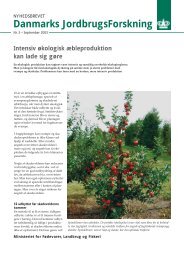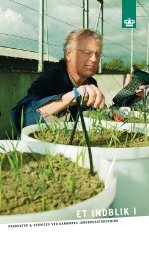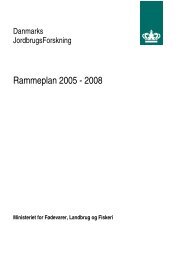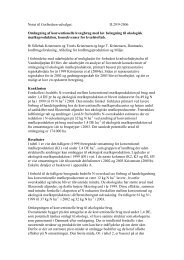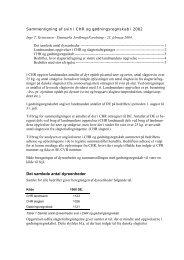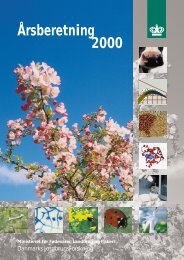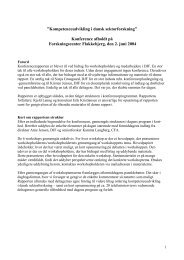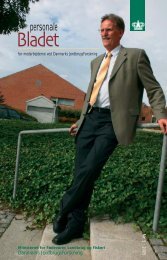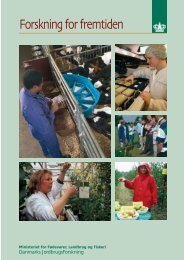Reproduction performances and conditions of group-housed non ...
Reproduction performances and conditions of group-housed non ...
Reproduction performances and conditions of group-housed non ...
You also want an ePaper? Increase the reach of your titles
YUMPU automatically turns print PDFs into web optimized ePapers that Google loves.
- Paper III -<br />
tions, αi is the fixed effect <strong>of</strong> parity <strong>group</strong>, βj is the fixed effect <strong>of</strong> layout, (αβ)ij is the interac-<br />
tion between parity <strong>group</strong> <strong>and</strong> layout, xijklm is the back fat at weaning or three weeks after<br />
mating, a is the regression parameter, Ak(j) <strong>and</strong> Bl(kj) are the normal distributed r<strong>and</strong>om ef-<br />
fects <strong>of</strong> herd (within layout) <strong>and</strong> batch (within herd) respectively. For all continuous indica-<br />
tors, Yijklm ~ N(E(Yijklm), σijklm 2 ) whereas for all categorical indicators, Yijklm ~ B(1, pijklm).<br />
The covariate xijklm was only included in the model <strong>of</strong> the indicator back fat gain. Further,<br />
when analysing the effect <strong>of</strong> herd <strong>and</strong> batch, βj <strong>and</strong> (αβ)ij were excluded. Effects with Pvalues<br />
above 0.10 were eliminated from the model one by one <strong>and</strong> the analysis was repeated.<br />
For all continuous indicators, the statistical analyses were performed with a linear mixed<br />
model using the MIXED procedure (Littell et al., 1996) in SAS ® (SAS Institute Inc. 1990).<br />
For all categorical indicators, the statistical analyses were performed with a generalized<br />
linear mixed model using the glmmPQL function in the MASS package (Venables & Ripley<br />
2002) <strong>of</strong> R (R Development Core Team 2004). Effect <strong>of</strong> herd <strong>and</strong> batch within herd<br />
(r<strong>and</strong>om effects) were analysed by a Wald Z-test that provides an approximate test that the<br />
variance components are zero. For all continuous indicators, this was done by including the<br />
option COVTEST in the MIXED procedure (Littell et al., 1996), <strong>and</strong> a similar test was calculated<br />
in R. The test for variance heterogeneity (test for different between-sow variation in<br />
herds with <strong>group</strong> feeding <strong>and</strong> herds with individual feeding) for all back fat measurements<br />
was performed by comparing a model with homogeneous covariance structure to a model<br />
with heterogeneous covariance structure by means <strong>of</strong> the likelihood ratio test. For all continuous<br />
indicators, the option GROUP in the MIXED procedure was used to specify heterogeneity<br />
in the covariance structure (Littell et al., 1996).<br />
The correlation between continuous indicators was calculated using the CORR procedure<br />
(SAS Institute Inc. 1990). The calculations were based on data transformed to obtain normality<br />
<strong>and</strong> corrected for herd <strong>and</strong> batch mean.<br />
3. Results<br />
For all continuous indicators, the overall averages <strong>and</strong> different measurements <strong>of</strong> the variation<br />
between sows across all 14 herds are presented in Table 3. For all lesions- <strong>and</strong> aggressions<br />
measurements, the 50% quantile was lower than the mean value, which indicates that<br />
these variables were not normally distributed but skewed to the right.<br />
68




